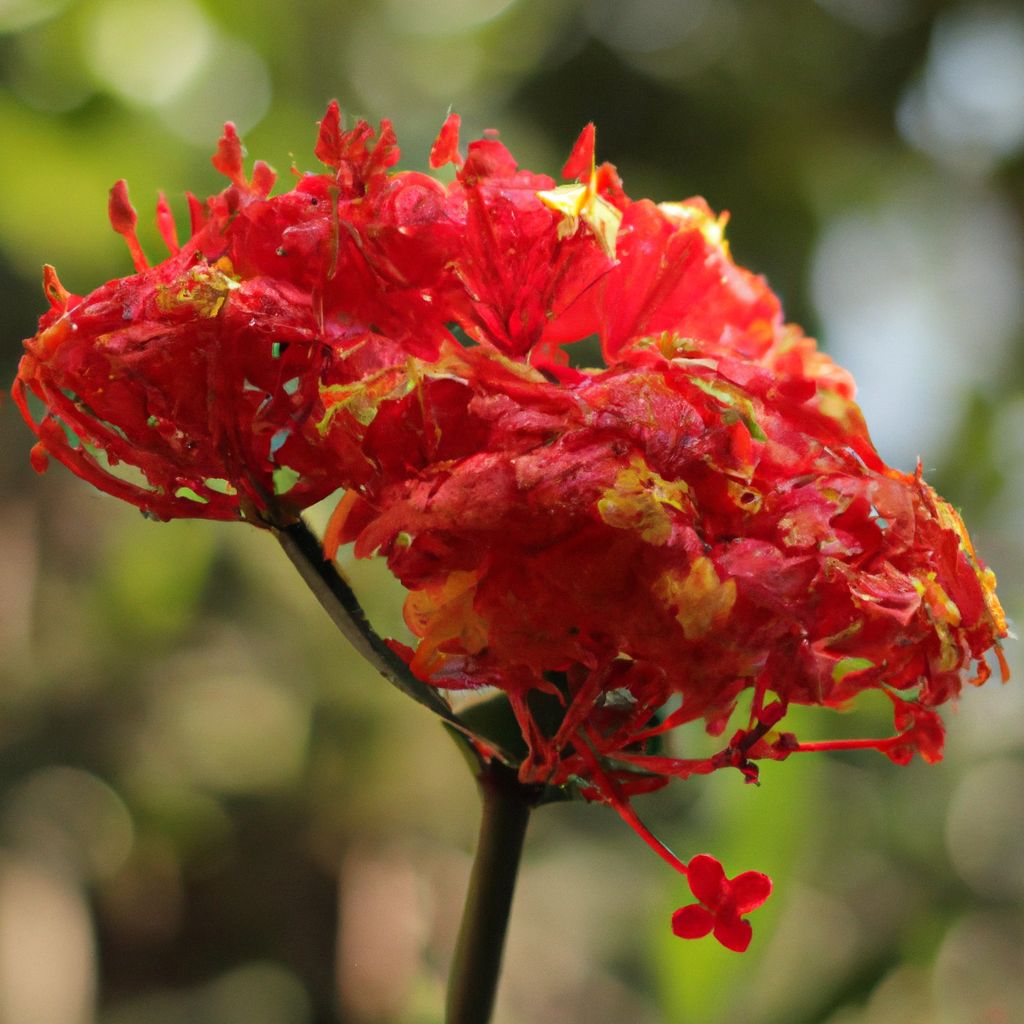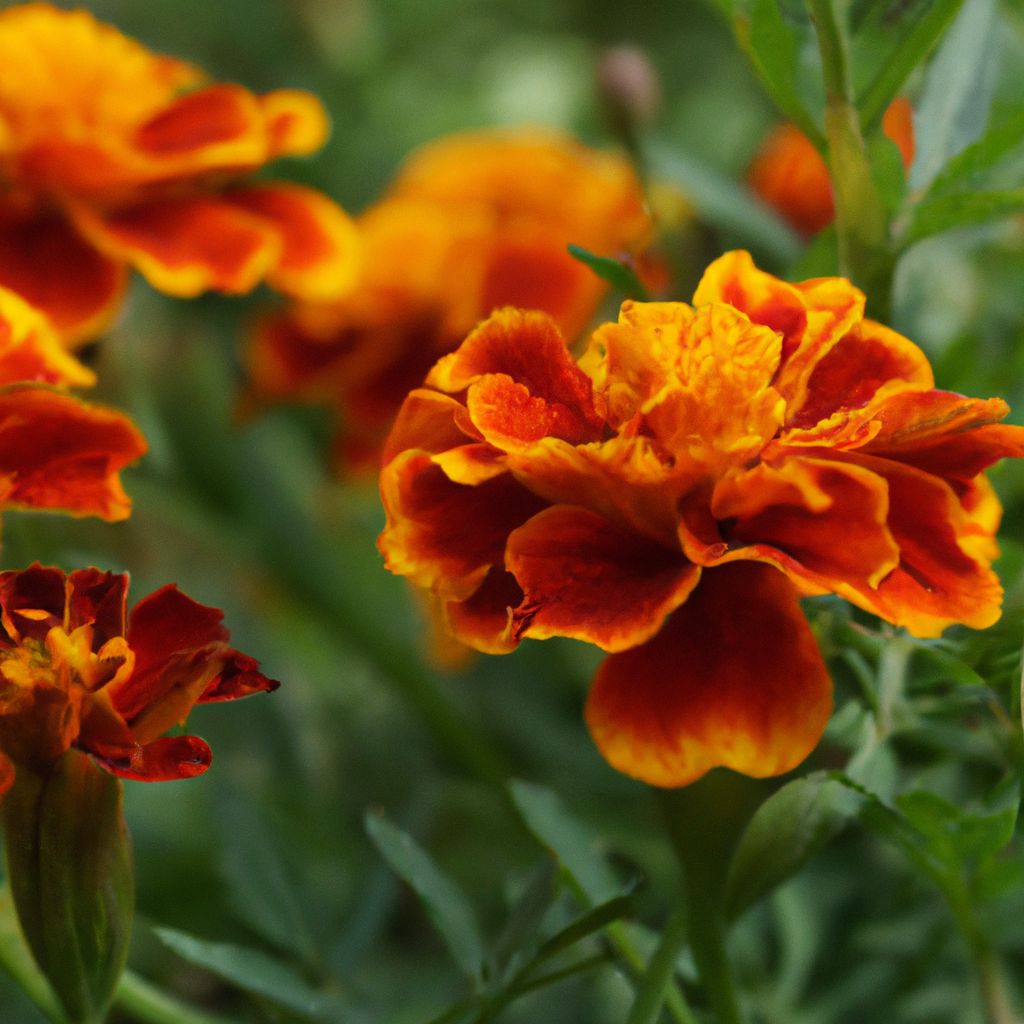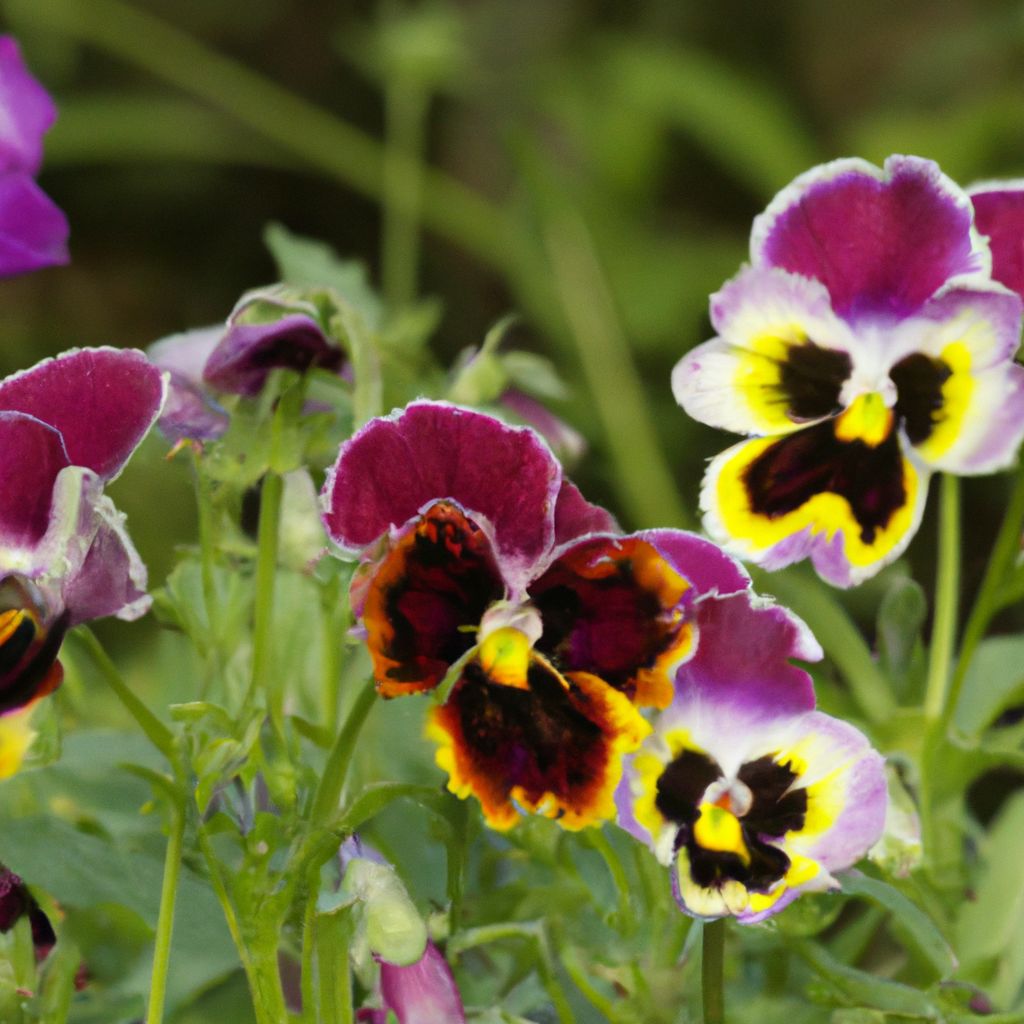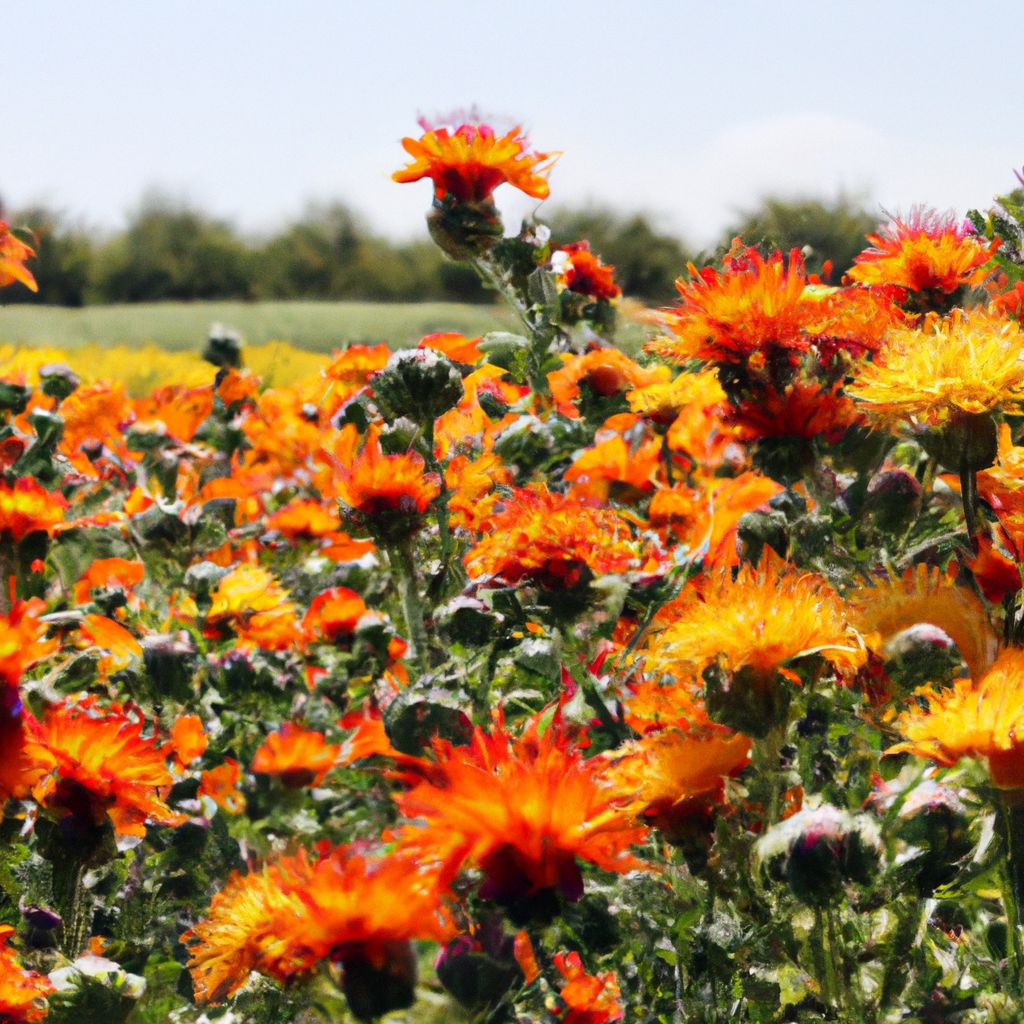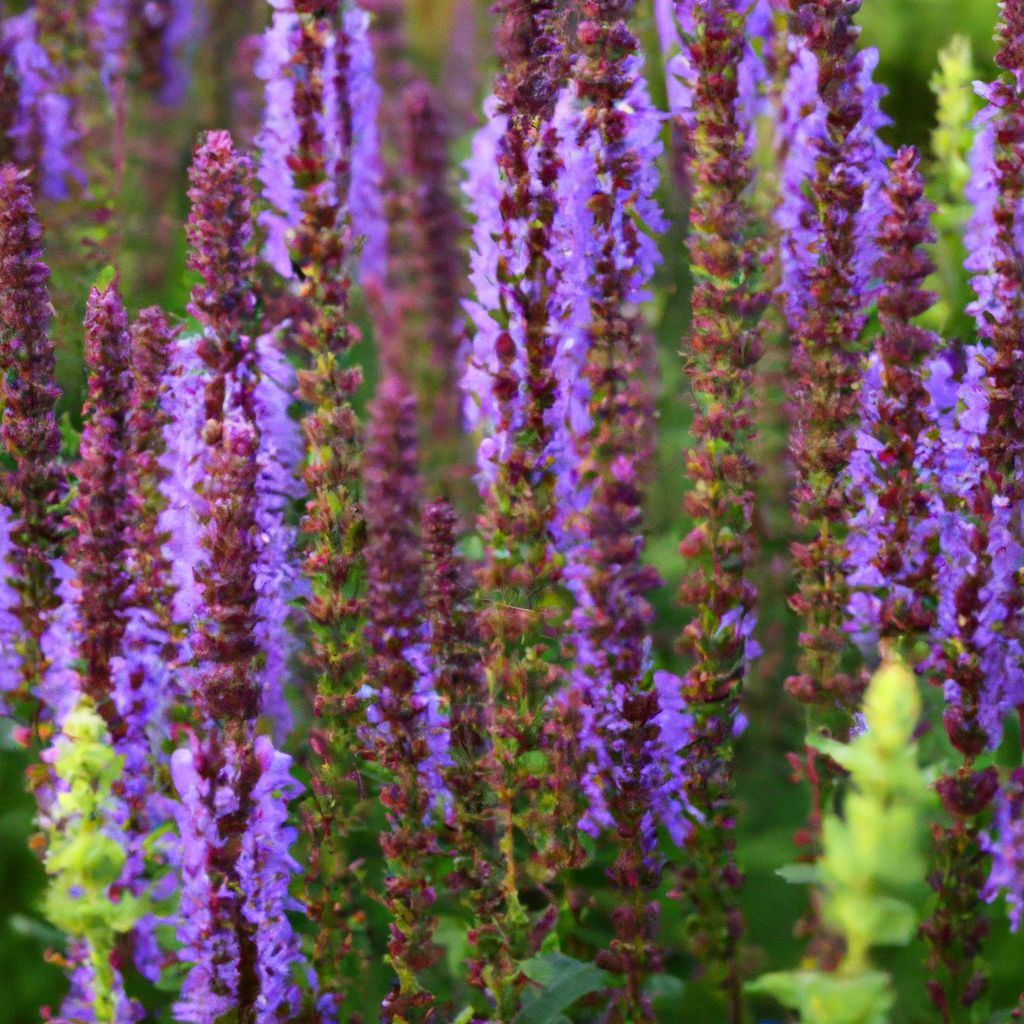There are many vibrant and colorful flowers cultivated in Western Africa offer a unique opportunity to cultivate exotic blossoms right in your own home. Propagating these flowers allows you to enjoy rare and captivating species while also providing a sense of personal satisfaction. This comprehensive guide will explore some of the most popular varieties found in the region and highlight the many benefits of growing these special flowers yourself. Along with detailed tips for successful cultivation, you’ll discover how to create the ideal conditions for your Western African blossoms to thrive indoors and outside. Soon your garden will flourish with the distinctive beauty of these magnificent blooms.
A Dazzling Diversity of Flower Varieties
Western Africa hosts an abundance of breathtaking flowers renowned for their vivid hues and stunning diversity. These unique regions have given rise to hundreds of fascinating flower species over the centuries. Here are some of the most popular varieties you can grow:
Hibiscus
Known for large, colorful blooms in shades of red, pink, yellow, and white. The hibiscus is a tropical flower that thrives in hot and humid conditions reminiscent of its African homeland. It produces big, prominent flowers that can grow up to 6 inches wide or even larger. The blossoms have a trumpet shape with five overlapping petals. The hibiscus comes in a wide variety of colors, ranging from bold reds to pastel pinks and peaches. Even the foliage makes a statement, with dark burgundy leaves on some varieties. It has a remarkably long blooming season, often flowering continuously throughout the summer and fall right up until frost. The hibiscus plant can grow quite large, up to 15 feet tall or more, so it requires adequate space in the garden. It does best with full sun exposure. With proper winter protection and care, hibiscus can live for many years, providing season after season of vibrant color.
Frangipani
Delicate, perfumed flowers in white, pink, and yellow. Frangipanis are known for their intoxicating fragrance, reminiscent of citrus and spices. Their common name comes from an Italian noble family, the Frangipanis, who used the fragrance in perfumes centuries ago. The flowers have five waxy petals and small yellow centers. They bloom primarily in summer and fall but can flower sporadically year-round in tropical locations. Frangipanis are smaller plants, growing 10-15 feet in height. They prefer warm tropical climates but can be grown in pots and brought indoors during winter in cooler regions. With protection from frost, frangipanis can live for decades and reach tree-like proportions over time. Their sweet scent and elegant blooms make them a prized addition to any garden.
Bougainvillea
Vigorous vines sporting vibrant blooms in purple, fuchsia, orange, and red. Bougainvilleas are evergreen climbing plants that produce an abundance of papery bracts in vivid colors surrounding tiny white flowers. Their arching flexible canes can grow over 30 feet long, making them ideal for training over pergolas, fences, and arbors. The colorful bracts typically appear in spring and fall but can bloom sporadically throughout the year in warm climates. Bougainvilleas thrive in full sun and require regular water and fertilizer to fuel their rapid growth. Pinching back the tips encourages bushier plants with even more flowers. With their tropical look and feel, bougainvilleas lend a touch of the exotic to any garden.
Canna Lily
Towering flowers in red, orange, yellow, and pink atop large, tropical-looking foliage. Canna lilies can grow up to 6 feet tall or higher, with bold green or bronze-tinged leaves that resemble banana plants. The big, showy flowers appear on erect stalks throughout the summer and fall, adding a jolt of color. Cannas thrive in moist, fertile soil and full sun exposure. In colder winter climates, the rhizomes can be dug up and stored in a cool place until spring planting time returns. Canna lilies command attention with their bold, architectural forms and vibrant hues.
African Daisy
Cheery perennial flowers in a range of sunset colors with dark centers. African daisies produce colorful blooms in warm shades of orange, red, yellow and peach. The daisy-like flowers have a distinct central cone and rippling petals. They bloom spring through fall in full sun exposure. The narrow, hairy green leaves form low clumps close to the ground. African daisies grow 1-2 feet tall and pair nicely with grasses or other wildflowers. Regular deadheading of spent blooms encourages more flowers. African daisies are carefree plants that lend pops of color to borders and rock gardens.
These flowers showcase the region’s rich biodiversity through their wide spectrum of sizes, scents, and captivating forms. Their resilience to heat and drought evidences their fortitude and adaptability to warm, arid environments. When propagated and cared for properly, Western African flowers can thrive beautifully inside your home or outside in the garden.

Rare and Exotic Varieties
Propagating Western African flowers enables you to enjoy unusual and exotic varieties you won’t find readily available at the average florist or garden center. The availability of these rare finds in their native region offers collectors and enthusiasts a wealth of unique options. Here are some to look for:
African Iris
Brilliant irises come in a range of jewel tones like ruby red, sunset orange and rich purple. Unlike the bearded types, African irises have smooth, delicate petals arising from a slender stalk. Their sword-like green foliage provides striking contrast to the colorful blooms. African irises grow up to 3 feet tall and do best with partial shade in hot climates. They reward the patient gardener with their stunning colors and forms. Seek out unusual varieties propagated from wild specimens.
Torch Lily
Also known as the red-hot poker plant, torch lilies ignite gardens with their vibrant orange and red blooms on towering flower spikes. They bloom during the summer and fall months and their bright colors and copious nectar attract hummingbirds. Torch lilies are hardy perennials that can grow up to 5 feet tall or more under the right conditions. They make quite a statement combined with blue or purple flowers.
Firewheel Tree
This aptly named flowering tree erupts with rings of dazzling scarlet blooms in spring against a backdrop of dark green, feathery leaves. Also known as the coral fountain tree, it thrives in warm, coastal climates across Africa and grows 10-15 feet tall and wide. The colorful flowers offer a striking contrast to the trunk and branches. It makes an excellent focal point.
Plumeria
Often called “frangipani”, it bears fragrant blooms ranging from white to pastel pink and yellow from spring to fall. The flowers have a central cluster of yellow stamens. Grow plumerias in pots to overwinter indoors in colder climates. Outdoors they can reach small tree proportions of 15-25 feet high. The sweet perfume of plumeria blooms will transport you to the tropics.
Bird of Paradise
Named for its distinct flowers resembling colorful birds in flight. It can grow 6 feet tall when raised as a houseplant. Outdoors it may reach 25 feet high. This unique plant produces large orange and blue blossoms on long stalks above leaves up to 3 feet long. It prefers partial shade in hot, humid environments. The bird of paradise makes a stunning focal point indoors or outside.
Adding these uncommon blossoms to your garden provides a sense of wonder and rarity. You can enjoy exotic flowers that are hard to find yet thrive beautifully in your own backyard when provided with the right care. Seek out rare African heirloom seeds passed down through generations and exotic varieties found at specialty nurseries to expand your horizons beyond typical offerings.
Personal Satisfaction and Therapeutic Value
Beyond enjoying their beauty, nurturing your own Western African flowers can provide profound personal satisfaction and therapeutic value. The hands-on process of propagating and cultivating these uncommon blossoms transforms your home and garden while also cultivating happiness, purpose and inner tranquility.
Stress Relief & Relaxation
- The rhythmic tasks of watering, pruning and tending to flowers enables you to destress. Focusing on each stage of propagation and care instills tranquility.
- Caring for plants redirects your attention away from everyday worries, providing a positive outlet to forget troubles for a while and calm anxiety.
- Simply being around flowers and greenery has been scientifically shown to lower blood pressure and heart rate. Their beauty soothes the mind.
- The garden chores involved in cultivating flowers qualify as light-to-moderate exercise which releases feel-good endorphins.
- Achieving success in growing healthy blossoms gives a rewarding sense of accomplishment that boosts confidence.
Creative Satisfaction
- Designing and cultivating a garden landscape provides an opportunity to express your creativity and style.
- Highlight and showcase exotic flowers by combining compatible plants with coordinated colors and forms.
- Experiment with inventive trellises, arbors and garden art to create an atmosphere of tropical opulence.
- Admire and appreciate how subtle tweaks to your design result in dramatic visual impact.
- The hands-on process of propagation connects you intimately to the natural life cycle.
Connecting With Nature
- Nurturing delicate blossoms from distant lands allows you to sustain rare beauty and diversity.
- Achieving success in growing unusual flowers instills awe for the resilience of exotic plants.
- You gain a profound appreciation for the mysteries and intricacies of nature.
- Observing the incremental changes involved in propagation and growth tunes you into nature’s rhythms.
- Exploring new varieties fosters curiosity about biodiversity and global cultures.
Improved Well-Being
- Exposure to sunlight while gardening elevates your vitamin D levels to benefit health.
- Physical activity in the garden helps maintain flexibility, strength and heart health.
- Regular gardening has been linked to increased immune function and lower risk of disease.
- Producing homegrown flowers allows you to make natural plant-based products and teas.
- Sharing your blossoms and gardening experiences forges community connections.
The sense of joy, purpose and inner harmony gained by cultivating exotic flowers is a priceless therapeutic tool to nurture your mind-body wellness in today’s hectic world.

Step-By-Step Guide to Successful Propagation
To fully reap the benefits of growing Western African flowers, proper techniques for selection, propagation and care are vital. Follow this step-by-step guide for success:
Selecting Species
- Consider your USDA hardiness zone and match flowers suited to your climate. Most Western African natives require Zone 10 or higher.
- Pick varieties aligned with the light levels, temperatures and humidity in locations where you intend to grow them.
- Look for compact cultivars if you need to maximize space on a patio or windowsill. Larger species can be stunning focal points in garden beds.
- Complementary flower forms, colors and blooming times create harmonious combinations with seasonal interest.
- For indoor growing, avoid plants with strong scents or messy fruits and pods. Seek out plants safe for homes with pets.
Preparing Growing Area
- Western African plants thrive in fertile, well-draining soil. Enrich with composted manure or leaf mold before planting.
- Test soil pH and adjust to slightly acidic around 6.5. Many African natives prefer lower pH levels.
- Improve dense or clay soils by mixing in coarse material like perlite, pine bark or lava rock to allow drainage.
- For outdoor beds, weed thoroughly and prepare an appropriate hole size for each plant.
- Fill indoor pots with quality potting mix. Add pebbles below for drainage. Pots should have drainage holes.
Choosing Propagation Method
- Seeds – Ideal for growing large quantities or rare species. Sow in starter trays and transplant seedlings. Maintain warm temperature for germination.
- Cuttings – Clip 6-8 inch stem tips. Dip in rooting hormone and plant in potting mix. Keep evenly moist until roots develop. Avoid overwatering.
- Division – Mature clumping plants can be dug up and divided into smaller sections. Replant divisions and water well.
- Layering – Bend flexible stems to the ground and cover partway with soil. New roots will sprout where covered. Clip to create a separate plant.
Providing Ideal Conditions
- Gradually move plants from shade into partial sun then full sun over a week when first transplanting.
- Many varieties require at least 6 hours of direct sun daily. Provide bright southern exposure.
- Daytime temperatures of 65-75°F suit most plants. Maintain 55°F minimum at night. Avoid drafty locations.
- Use heat mats and grow lights to maintain warmth and light levels for indoor plants in winter.
- Group container plants to create a humid microclimate. Mist foliage regularly to supplement humidity.
Ongoing Care Practices
- Water early in the day to allow leaf surfaces to dry. Avoid overhead watering.
- Apply 2-4 inches of organic mulch around plants to conserve moisture and suppress weeds. Replenish as needed.
- Feed with slow release pelleted fertilizer or monthly applications of fish emulsion and compost tea.
- Prune off spent flowers and pinch back leggy growth to encourage bushiness and more blooms.
- Rotate indoor plants occasionally to ensure even sun exposure. Bring outdoor potted plants inside before frost.
- Scout for pests and diseases. Remove affected material promptly. Apply organic treatments only if infestations persist.
With attention to their preferences and needs, your exotic Western African flowers will thrive and astound you with their beauty.

Essential Growing Tips
Proper techniques for irrigation, sunlight, soil health, and pest control are vital for successfully growing vibrant Western African flowers.
Watering
- Early morning watering allows moisture to penetrate the soil and plant roots before hot sun causes evaporation.
- Deep, infrequent watering encourages stronger root development compared to frequent shallow watering.
- Allow soil to partially dry out between waterings. Check moisture levels with your finger. Avoid excess moisture.
- Reduce watering frequency in winter but don’t allow plants to completely dry out. Dormant plants need less water.
- Potted plants should be watered more often than in-ground plantings, sometimes daily in hot weather.
Sunlight & Temperature
- Most Western African flowers thrive in full sun – at least 6-8 hours of direct sun daily. Morning sun is essential.
- Sheltered microclimates against walls or fences absorb and radiate heat. Position potted plants in sun-warmed spots.
- If daytime highs exceed 85°F, provide afternoon shade. Dappled light reduces leaf scorch.
- Move potted plants into a bright garage or greenhouse if temperatures drop below 45°F.
- Allow plants to adapt to increasing light levels over 7-10 days when moving into brighter locations.
Soil Health
- Mix in several inches of compost or well-rotted manure when preparing beds. Top-dress annually.
- Blend a balanced organic granular fertilizer into soil before planting. Use slow release formulas to avoid burn.
- Boost nutrients mid-season with compost tea or natural additives like greensand and kelp meal.
- Check soil pH annually. A slightly acidic pH of 6.0-6.5 suits most Western African plants.
- Rotate plants in different beds each year to prevent nutrient deficiencies in the soil.
Pest Deterrence
- Remove weeds, dead leaves and debris where pests may lurk. Keep the growing area clear.
- Row covers and screens can physically exclude flying and jumping pests from plants.
- Introduce beneficial insects like ladybugs, praying mantis and lacewings to control harmful pests.
- Remove slugs and snails by hand. Set out shallow dishes of beer to trap them.
- As a last resort for severe infestations, use OMRI-listed organic pest control formulas.
Following these tips will help provide the ideal environment for your exotic African flowers to put on a sensational display of color and fragrance.
Overcoming Propagation & Growing Challenges
When cultivating unusual Western African flowers, you may encounter some common challenges involved in getting seeds to germinate, cuttings to root, and transplants to become established. Don’t get discouraged! Just follow these techniques to overcome issues:
Germination Difficulties
- Pretreat tough-coated seeds by nicking or sanding the coating before planting to allow water uptake.
- Cold stratify seeds by refrigerating in damp peat moss for several weeks before sowing.
- Use a heat mat or bottom heat to provide consistent warm temperature for seed trays.
- Cover seeds lightly with fine vermiculite instead of soil to avoid fungal issues.
- Water with a weak chamomile tea solution to inhibit fungal growth during germination.
Rooting Problems
- Take cuttings from young stems rather than mature wood. Select shoot tips with visible leaf nodes.
- Use a sharp, sterilized blade to make a clean diagonal cut below a leaf node.
- Apply rooting hormone carefully to the cut end to encourage root growth.
- Maintain high humidity around cuttings by covering with plastic or misting often.
- Avoid overwatering cuttings – use just enough moisture to keep potting medium evenly moist.
Establishment Difficulties
- Plant bareroot transplants at the same level they were growing previously after soaking roots.
- Dig wide, shallow holes for plants grown in pots. Loosen and spread outward any circling roots before backfilling.
- Provide temporary shade over transplants while they establish. Gradually increase exposure to full sun.
- Stake tall plants and heavy bloomers to provide support until they develop strong root systems.
- Mulch around new plantings to moderate soil temperature and moisture. Check moisture levels daily.
Environmental Factors
- Move potted plants to sheltered areas when temperatures drop. Cover tender plants or bring containers indoors.
- Supplement low humidity with gravel trays or misting. Increase air circulation with fans to prevent fungal diseases.
- Provide supplemental lighting if indoor plants lack adequate sunlight from windows. Rotate plants for even exposure.
- Acclimate plants slowly over 7-10 days to prevent shock when moving between indoor and outdoor growing areas.
- Construct temporary cold frames or hoop houses over in-ground plantings to extend the growing season into winter.
Pests and Diseases
- Remove affected leaves and stems promptly to prevent spread. Disinfect shears after every cut.
- Apply horticultural oils or insecticidal soaps for soft-bodied insects like aphids, thrips and mites.
- Sprinkle diatomaceous earth on soil to deter crawling pests. Reapply after rain or watering.
- Set out beer traps for slugs and snails. Hand pick large beetles and caterpillars.
- Improve air circulation and avoid overhead watering to prevent mildew, mold and fungal issues.
- Apply organic fungicides containing Bacillus subtilis if fungal problems persist. Test on a small area first.
By troubleshooting challenges as they arise, you can maintain the health and vigor of your exotic African flowers. Pay close attention and intervene promptly to resolve any problems before they intensify.

Designing Displays for Dramatic Impact
One of the most enjoyable aspects of growing Western African flowers is using them to design stunning garden displays. With so many choices, you can create breathtaking compositions tailored to your space. Here are some tips for dramatic impact:
Combine textures – Allow bold, architectural cannas to contrast airy and delicate orchids. Rough, strappy leaves make a striking backdrop for frilly blooms.
Repetition creates rhythm – Repeat a particular flower at intervals to establish visual rhythm. Use groups of 3 or 5 plants spaced evenly for a pleasing effect.
Consider height – Position taller flowers like bird of paradise or torch lily toward the back or center. Lower growers such as African daisies suit the foreground.
Alternate flower shapes – Contrast round blooms with spiky ones. Clover-shaped leaves make an interesting neighbor for star-shaped flowers.
Play with color – Complement hot colors like oranges and reds with cool blue or purple companions. White flowers brighten shady spots.
Feature foliage – Variegated, colored or dramatic leaves deserve the spotlight too. Interplant them with solid green foliage for pops of contrast.
Add hardscaping – Incorporate striking trellises, arbors, decorative pots and pathway materials to highlight your flowers.
Use focal points – Draw the eye by showcasing a prominent specimen plant. Surround it with lower plantings so it stands out.
With thoughtful plant combinations and design elements, you can create a stunning landscape that spotlights the exotic allure of Western African flowers.
Enjoying the Bounty of Fragrance and Beauty
Beyond their visual impact, one of the great pleasures of growing Western African flowers is enjoying their lush fragrance and intriguing forms up close. You can maximize your enjoyment through activities like:
- Cut fresh blossoms for indoor bouquets.group container plants to increase humidity. Rotate plants regularly for even growth.
- Float flowers in a bowl for a stunning table centerpiece.
- Dry interesting seed pods and flower heads for unique crafts and arrangements.
- Press vibrant flowers between book pages to make decorative keepsakes.
- Brew tea from aromatic flowers and herbs. Hibiscus and lemongrass are popular choices.
- Create floral scented oils, vinegars, sugars, soaps and even cocktails!
- Photograph your flowers to document your cultivation journey and share their splendor.
- Gift potted plants, seeds, cuttings or bouquets to share with lucky friends and family.
Cultivating exotic African flowers is a fulfilling journey that keeps on giving. As you care for your blossoms and enjoy their beauty up close, you’ll discover a deep sense of wonder and appreciation for nature’s diversity.
So embark on this exotic horticultural adventure! With the right guidance, you can successfully grow stunning Western African flowers that will transform your living space with their vibrant colors, enticing fragrances and captivating forms. Soon your home and garden will become a flourishing oasis of beauty, tranquility and personal reward.











































